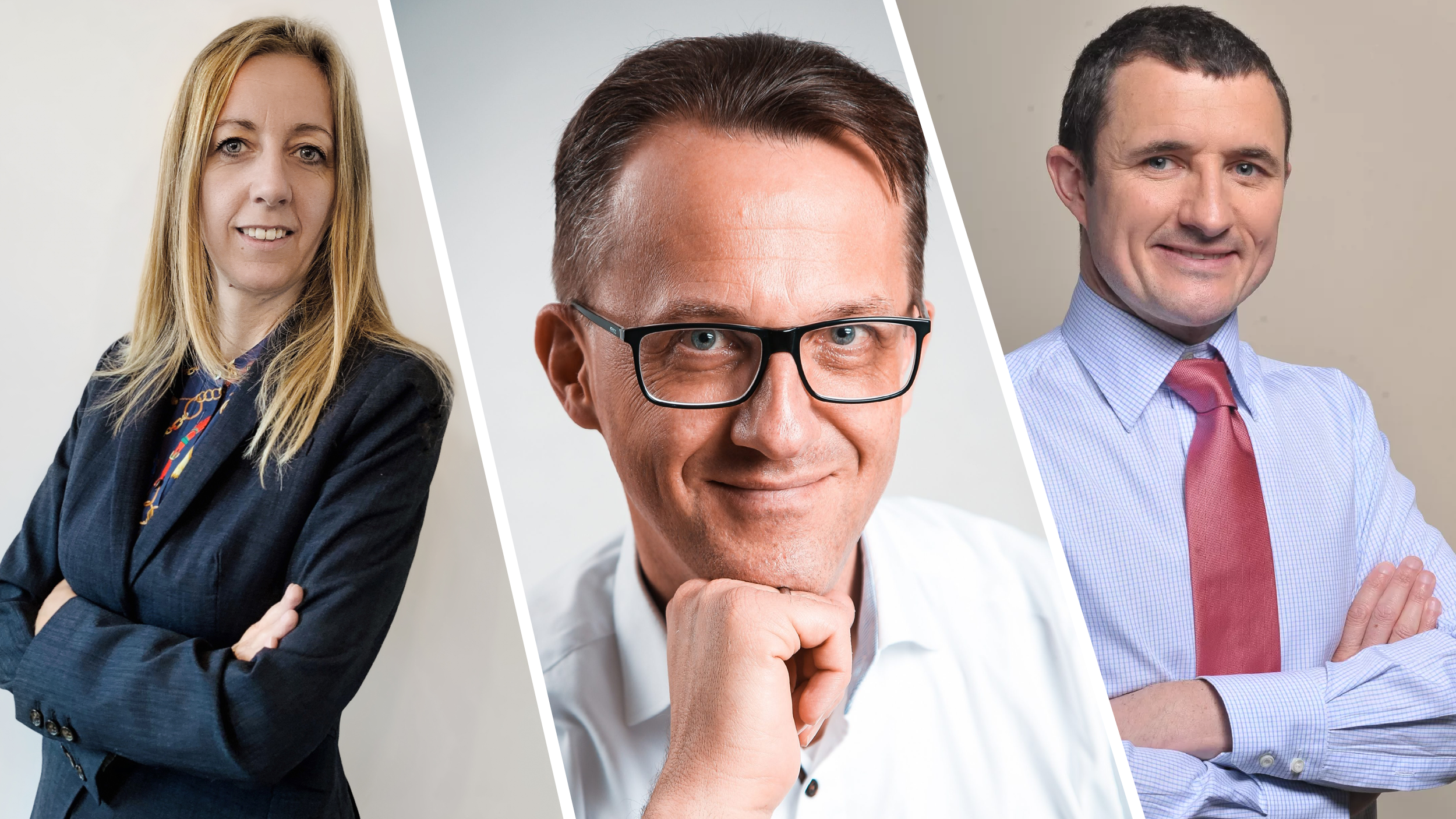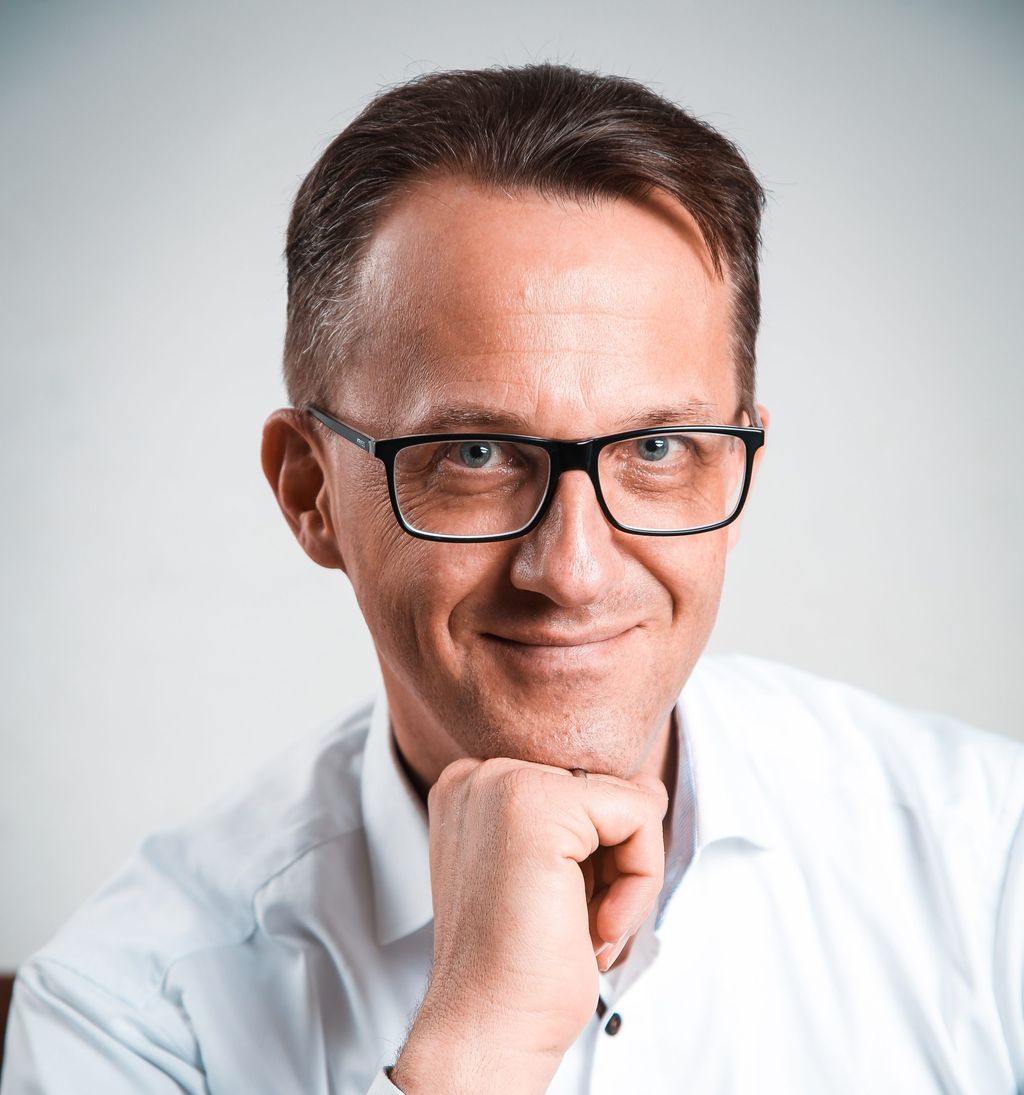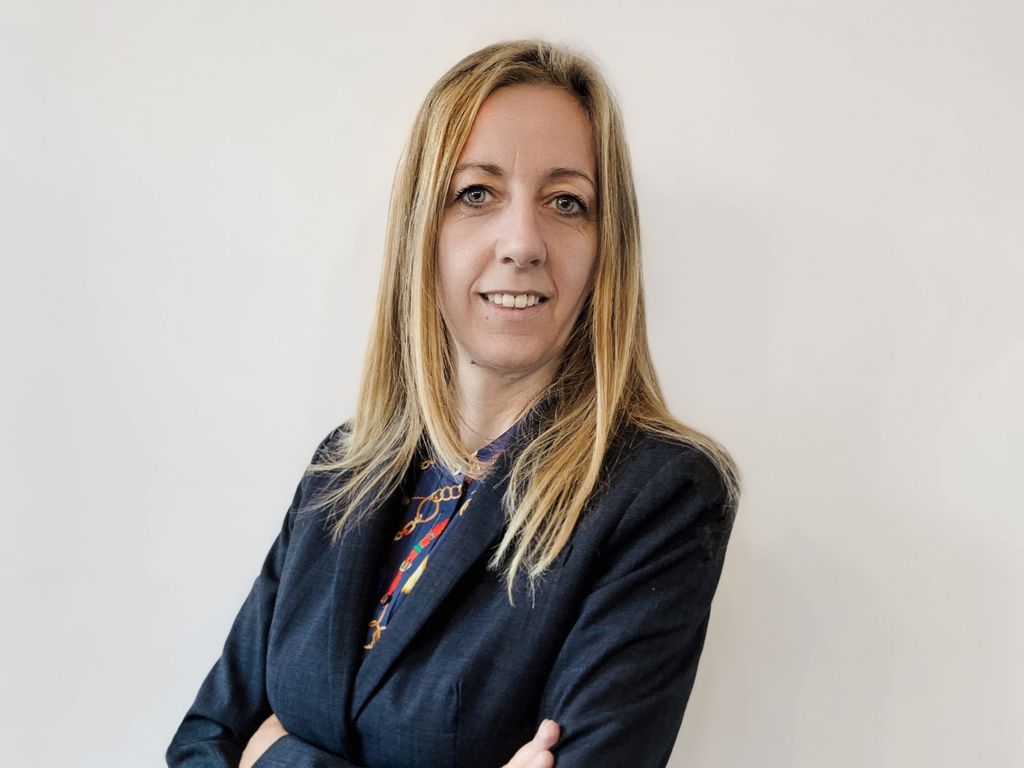Building a digital-first Renovation Wave: A chat with Sandra Alverà (Panasonic), Norbert Lütke-Entrup (Siemens) and Marc Nézet (Schneider Electric)
The Renovation Wave is Europe’s flagship initiative for a greener building sector. But where does digital fit in? We asked three executives from companies who are pioneering the digital transformation of buildings in Europe.
In our recent paper “Digital building transformations for Europe’s green renovations”, we show that integrating digital technologies in a building’s lifecycle, from design to maintenance, can cut 30 per cent of the sector’s current emissions.
To better understand what a digitally-oriented Renovation Wave would mean for Europe’s climate goals, job growth and competitiveness, we asked three experts: Norbert Lütke-Entrup, Head of Corporate Technology and Innovation Management at Siemens; Sandra Alverà, Head of Government Affairs for Europe at Panasonic; and Marc Nézet, Senior Vice President of Energy Management and Software Transformation at Schneider Electric. All three are also Executive Board members of DIGITALEUROPE and their companies have led pioneering projects in the digital transformation of Europe’s building sector.

DIGITALEUROPE: Hello Sandra, Norbert and Marc, and thank you for having a chat with us! Let me start by asking you a burning question on everyone’s mind: is a digitised building actually a greener building?
Marc Nézet, Schneider Electric: Buildings is the critical sector to tackle to achieve Europe’s Net Zero commitment, and digital and green go hand in hand. Construction is the least digitised sector in the EU and European construction companies are late compared to their US counterparts. Digital innovation and software are the ‘game changer’ to accelerate energy decarbonization of buildings. However, we are not currently acting at the speed required to meet the challenge. Based on the current renovation rate[1], we estimate it would take approximately four centuries to renovate the building sector in Europe. On the other hand, by deploying digital technologies, Europe could be on target within one generation!
Digital technologies improve efficiency through the entire lifecycle (design, construction and operation). Not only do these improve the building operations, they also improve the entire supply system. You have to look at this through a holistic approach, what we call systemic efficiency, integrating energy efficiency, smart digital technology, and re-use of materials. Schneider Electric is collaborating on this with the World Economic Forum.
The question is, why are we not doing this? I think it is a matter of will. Public incentives to trigger renovation programmes achieved little impact over the past couple of years, because they were not sufficiently considering the impact of digital technologies.
Sandra Alverà, Panasonic: Digital offers the possibility to connect the building with its environment, allowing the systems to access additional information and users to take appropriate decisions based on this data.
These can be reducing the overall energy consumption, for example by connecting the heating and cooling systems to renewable sources or by integrating an intelligent energy system management that can monitor consumption and prevent waste. But it’s also about improving comfort, well-being and health of occupants by adapting to their specific needs.
So, lowering the environmental impact is one of the outcomes, but it goes beyond that. Digitalisation also helps us increase transparency and optimisation by capturing data that can be analysed. Connectivity and digitalization are not the end per se, but rather the critical tools to achieve building-related improvements, energy savings, and so on.
Norbert Lütke-Entrup, Siemens: The building industry is moving towards sustainability, but there are several obstacles. For instance, builders of certified low-emission buildings face higher initial costs, a higher complexity of design, documentation requirements, and demands for continuous performance improvement.
Building Information Modelling (BIM) can help us overcome these hurdles. This method allows to create digital representations of buildings’ physical and functional characteristics, and also to digitize design, construction and operation workflows. So far, BIM has been applied mainly to the design phase of new buildings, but a great deal of its potential lies in the digital transformation of renovation projects.
Furthermore, elaborate energy management systems allow building operators to track and analyse energy consumption, identifying abnormal performance, thus identifying sources of waste and improve energy efficiency. This is even more important for buildings that have their own power generation and storage units – e.g. a photovoltaic panel, a battery or a heat pump for heating water.
DE: Digital can play a role in different stages in the building lifecycle. We all know designers no longer use pen and paper. What does it look like when a building is digitised from end to finish? What’s the benefit of integrating cutting-edge technology in the whole process?
Norbert: 3D models are not enough. We need to sense the building. For example, BIM gives us greater insights and a better understanding of complex building information. It provides digital tools for effective information handling and helps to avoid loss of information, which is of great value in a building project where many different parties have to work together. This means that owners and planners can visualise, simulate and optimise the building prior to breaking ground; installers and plumbers work on up-to-date plans, so that switches and sockets end up in the right place; and facility managers have the full documentation and history of the products and installations they are tasked to maintain.
Ultimately, BIM is the entry ticket to a truly lean building design, construction and maintenance approach that allows you to “get it right” from the start and continue to improve, much like what we see happening in manufacturing.
Sandra: The benefit of integrating cutting-edge devices into the building construction process is that it encompasses the entire construction value chain, from architects and installers to product-manufacturing businesses (furniture, kitchen appliances, TV, heating, ventilation and air conditioning). And not least, it benefits people’s lifestyle, by simulating and testing a wider range of real-life building uses and functioning that can be optimised and adjusted to the occupants’ needs.
Marc: Software and digital innovation are improving efficiency and sustainability from end to end, bringing a new integrated lifecycle approach, and empowering all users to make informed decisions that are both smarter and greener.
The design phase is where most value can be gained. Design errors can account for an increase of 5 to 20 per cent from total capital expenditures, and design software helps to correct human bias and errors, ensure compliance with standards and to adapt more quickly to changing requirements.
In addition, software is an asset in building operations and maintenance, helping owners to manage multiple buildings and making them more liveable, efficient, and sustainable for their occupants. An interoperable data environment allows data to be fed back to the design phase, ensuring a virtuous circle of efficiency and standard compliance.

“Based on the current renovation rate, we estimate it would take approximately four centuries to renovate the building sector in Europe. On the other hand, by deploying digital technologies, Europe could be on target within one generation!”
DE: The construction sector is a pillar of the EU economy. It provides 18 million direct jobs and contributes to about 9% of the EU’s GDP. What effects do you think a truly digitally-oriented Renovation Wave would have on these jobs?
Sandra: A greater focus on digital means benefits for the whole construction ecosystem, in addition to modernising and strengthening the building industry.
There is huge potential for good, well-paid jobs, but building companies will need to support installers, for example, to transition towards digital and new technologies, by helping them develop necessary ICT skills and by providing the necessary tools. Only in this way can the digital Renovation Wave be a real success.
Marc: Today, Europe already has global leaders in building equipment and energy management systems. Mastering the value chain around smart (i.e. digitally transformed) buildings is key to ensure the business value will remain in Europe. This will create domestic jobs for installing and integrating low-carbon technologies in buildings, for example rooftop solar panels or electric vehicle smart charging infrastructure and energy management systems.
The main obstacle to unlocking this and more employment is that many parts of the renovation industry still work in silos, which partly explains why the energy renovation work has been so slow. We need to foster more collaboration to establish a sustainable market mechanism. For example, DIGITALEUROPE plays an important role to bring together key players to advance buildings renovation in Europe with digital at the core. We need more of that.
Norbert: Compared to sectors like manufacturing, the European building industry has shown a much lower productivity growth over the past decades. This is mainly due to the fragmented nature of both the industry itself and the building construction value chain. Having a digital representation of the building at everybody’s disposal could well be the game changer that lifts the entire industry to a new level of productivity. This will in turn increase the global competitiveness of the European building industry and thus safeguard jobs.
However, in order to realize this potential, a rethink of the planning process is unavoidable. Pure drawing on a Computer Aided Design (CAD) computer should be a thing of the past, and the growing complexity of building design and operations needs to be taken into account already from the planning phase. This requires better engineering knowledge.

“Ultimately, Building Information Modelling is the entry ticket to a truly lean building design, construction and maintenance approach that allows you to “get it right” from the start and continue to improve, much like what we see happening in manufacturing.”
DE: Speaking of data processing, different service providers and equipment manufacturers will have to make sure smart devices and software are interoperable. What do we need to make smart buildings speak the same language? Are data protection and cybersecurity a concern?
Norbert: Clearly, the potential of BIM can be only realised through a structured set of standards, specifications and reports allowing to define, record, and securely exchange asset data, with links to external data too. Common semantics and machine-readable data are key. This is relevant not only for construction firms, but also for providers of building-related products and systems such as Siemens, Schneider or Panasonic, as well as for actively including small and medium-sized enterprises, and ultimately enabling the widespread and secure adoption of digitalised processes in construction.
From a cybersecurity perspective, while buildings might not be the main target for cyberattacks, there are risks. This is why owners and operators are strongly advised to implement a cybersecurity strategy for their building and why one important objective is bringing what currently are different levels of security awareness and discipline to the same pace.
Sandra: On data privacy and protection, it is crucial to stress that privacy is key for the trust and the uptake of new technologies. Horizontal requirements already apply in this case (i.e. GDPR), which means there should be no need for different or additional rules.
Regarding one “common language”, in most cases it’s actually not necessary nor realistic – different standards are already in use. We should look at it from a different perspective, i.e. flexibility is needed to adapt to existing “languages”, covering different building types and equipment.
This does require interoperability between systems, and this is already being done in the industry in the form of gateways, i.e. those devices that connect different networks. One example: cloud platforms are increasingly used to connect building automation equipment, in order to monitor, optimize and identify possible needs for repair or maintenance.
Marc: Fast evolution among codes and standards are driving convergence, facilitating interoperability and open BIM. A Common Data Environment, where key players move from a fragmented to a federated model, would create a true business case for digital twin adoption.
At Schneider Electric, we’re involved in two big initiatives:[2] through the Building Smart Alliance, we support industry Foundation Classes (IFC) data exchange format and an open BIM, and through eClass, we support interoperability, openness as we protect the electrical domain of expertise.

“A greater focus on digital means benefits for the whole construction ecosystem. By transitioning towards digital and new technologies, helping workers develop necessary ICT skills, and by providing them with the necessary tools, the digital Renovation Wave can be a real success.”
DE: Norbert, can you tell us what a building’s digital twin is and how it improves processes and efficiency?
Norbert: A digital building twin is a real-time digital representation of a building or infrastructure, using tools and technologies to collect and process real data and information from devices, components, parts, machines on an ongoing construction site and structures in use. This differs from BIM, which traditionally does not include real-time data collected from the construction site or building in operation.
Digital twins allow companies to continuously monitor real progress against the initial BIM-based planning, so methods to ensure interoperability between BIM and digital twins are encouraged. Ultimately, a digital building twin is ensuring resource efficiency through its dynamic predictions, thus reducing waste and improving time management.
DE: Marc, I know that Schneider Electric has built a digitally-managed warehouse in Finland that is cutting its energy consumption while at the same time supplying energy and heat to the local community. How does that work?
Marc: This is an interesting case of how digital technologies are leveraged in an integrated system approach which delivers efficiency and sustainability. Lidl’s distribution centre in Järvenpää, with an area of 60,000 square metres, is Finland’s largest warehouse. The centre was completed in 2019 and it operates on 100% renewable energy. It actually produces more energy than it consumes throughout the year.
To achieve the highest efficiency possible, the digitally-enabled warehouse employs a microgrid along with a comprehensive building management system to collect, forecast and optimize the operation of on-site resources using real-time data and predictive machine learning algorithms.
It is also the first building in Finland with a combined heating and cooling system that stores heat for colder days or supplies the excess to the city heating network – heating water for approximately 500 private homes. Similarly, the distribution centre provides electricity grid services to the Finnish system operator, securing grid stability. The project used the integrated Schneider Electric EcoStruxure™ Microgrid and EcoStruxure Building Operation solution, delivering energy cost savings of up to 70%.
DE: Sandra, can you tell us more about the new smart city quarter that Panasonic developed in Berlin? How does that combine smart technologies with sustainability?
Sandra: Sure, this smart city quarter is called “Future Living Berlin”, where Panasonic’s European R&D team has developed and currently tests an energy management solution aiming to optimise the locally produced renewable energy.
Here, the energy produced by our photovoltaic (PV) panels is smartly distributed to and used by the air to water heat pumps. Any surplus energy can be stored in battery storage.
There are a few of really interesting, ground-breaking elements in this project. First of all, this integration of air to water heat pump technology with PV enables a smart way of integrating heat and electricity. This leads to a significant reduction in the operating costs, which of course is a benefit for the energy provider or the building owner, especially since local use of energy is subsidized in Germany through the so-called “Mieterstrom” law.
But not only the building owner and the utility specialist running this installation benefit from it, the end customer does too, as this set-up reduces the running costs for space heating and hot water. And this solution benefits the environment too, lowering the carbon emissions in the heating for 90 households.
We believe this solution can work as a blueprint not only for new building, but also renovation projects, at large and small scales.
Digital building transformations for Europe’s green renovations: Sustainable living and working
References
[1] The yearly deep energy efficiency renovation rate barely reaches 0,2% for both residential and non-residential buildings. Source: https://ec.europa.eu/energy/sites/ener/files/documents/1.final_report.pdf
[2] Siemens is also a member of the Building Smart Alliance and eClass.
